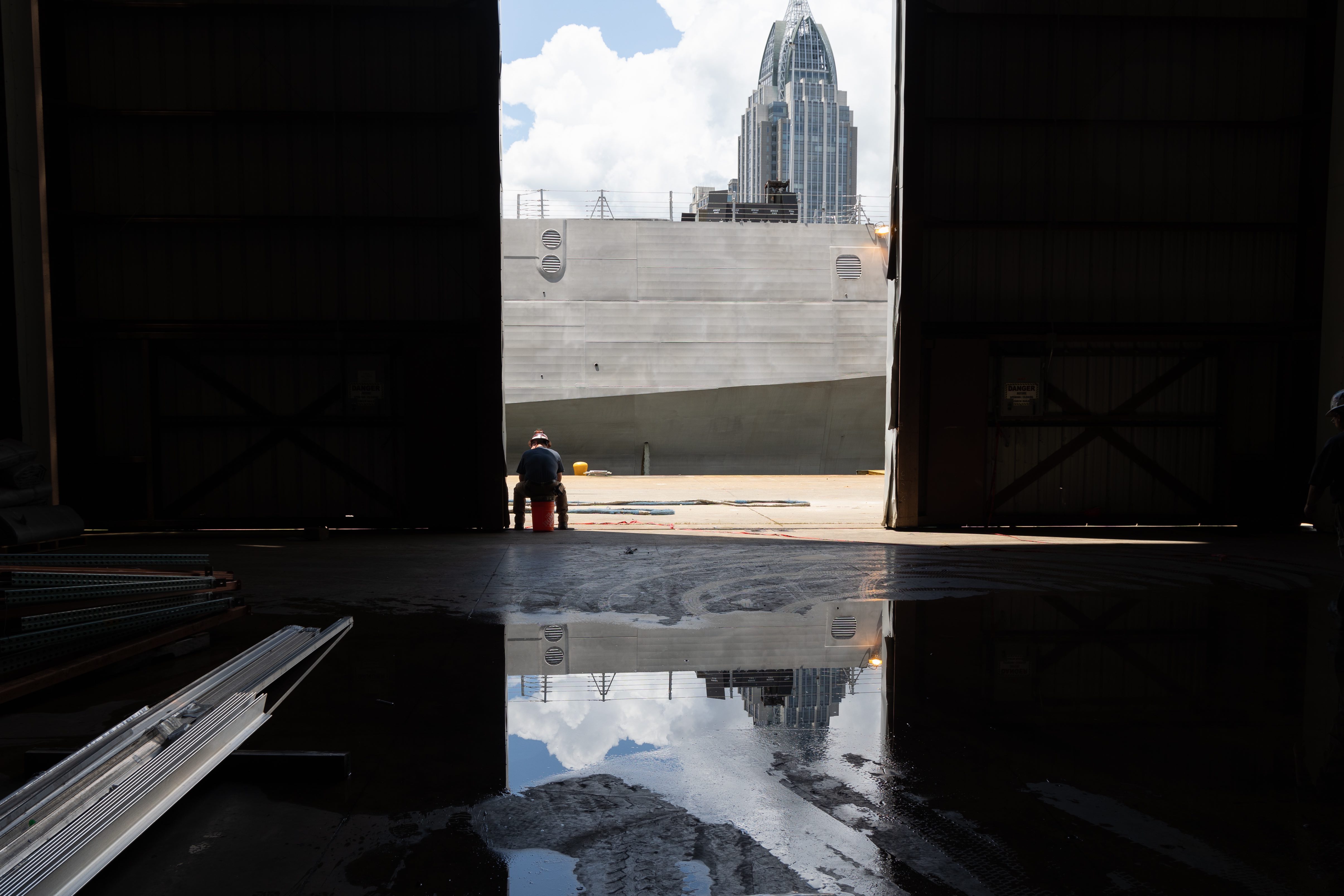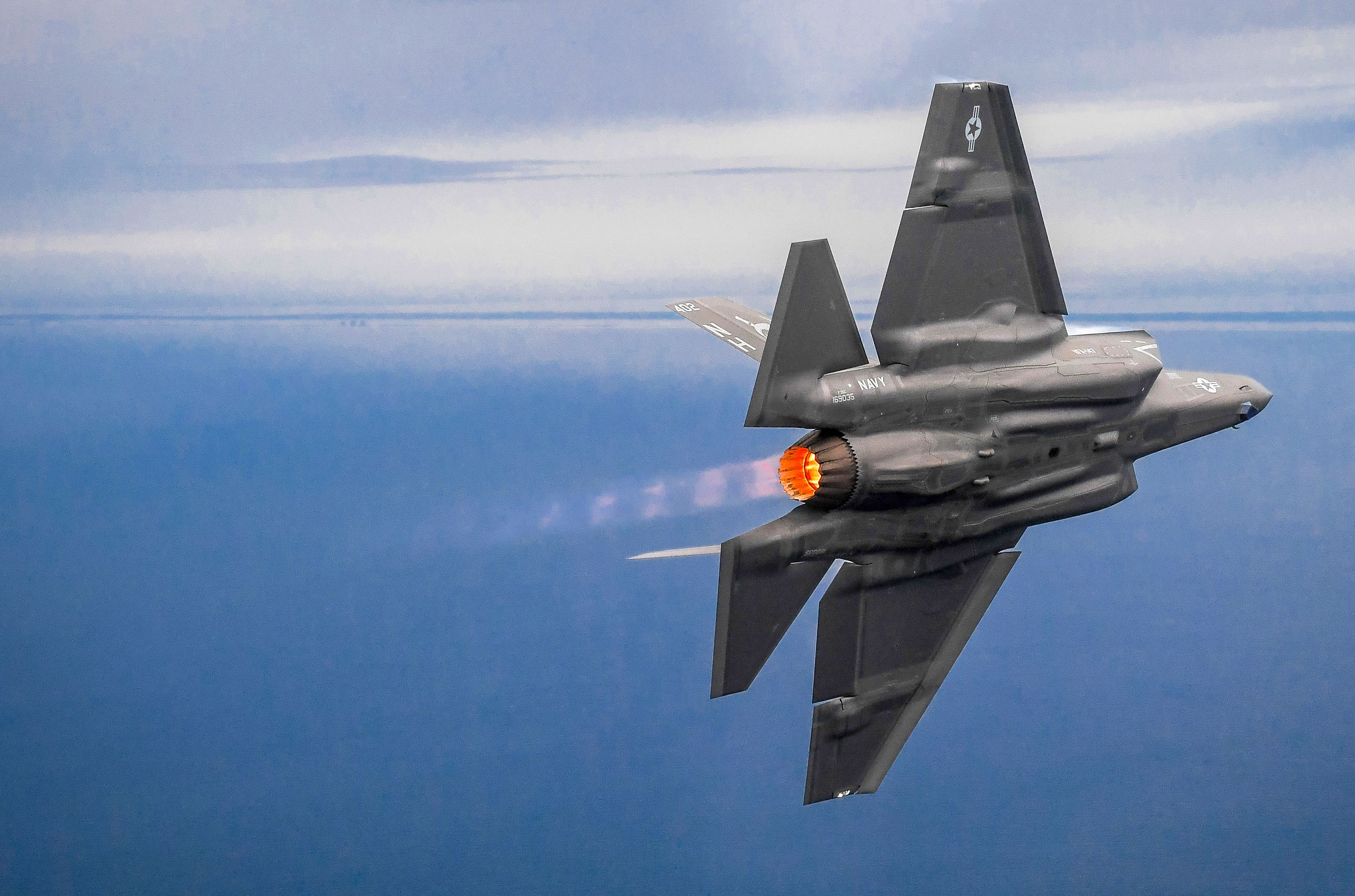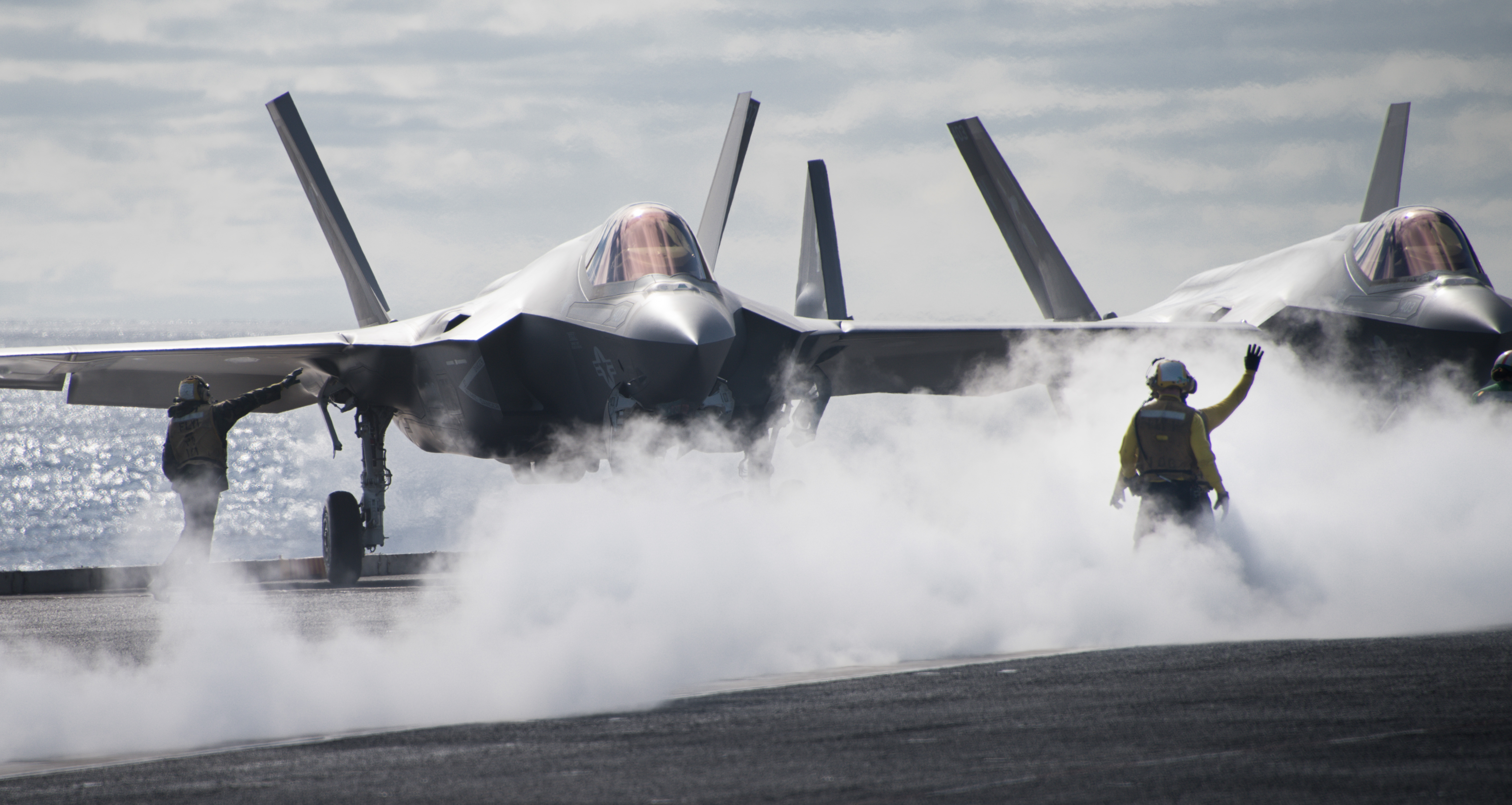
POHAKULOA TRAINING AREA, ISLAND OF HAWAII – Flying into the Pohakuloa Training Area, more than 6,000 feet above sea level and nestled between two volcanoes on the Big Island, the ground below looks nothing like a tropical Hawaiian paradise. The day starts out cold, and as soon as the sun warms up the mountainside, fog and rain are ushered up the mountain that cool down the area again.
Among the lava rocks grow scraggly trees and brown grasses, and aside from wild goats and nenes there are few signs of life.
Where better for Marines and soldiers to bring out their big guns?
The U.S. Army’s Pohakuloa Training Area hosted the live-fire portion of this year’s Rim of the Pacific exercise, with ground forces from eight countries leaving amphibious ships for about 12 days to practice with “the entire gamut of weapons systems, everything from the pistol all the way up to 84mm rockets and missiles,” Chief Warrant Officer 4 Joshua Smith, the Marine Gunner for 3rd Marine Regiment, told USNI News during a training event last week.
The ground forces’ time away from the amphibious ships was their only opportunity for live fire exercises, so while the ships at sea focused on interoperability training and prepared for the big movements in the exercise’s final phase, ground forces and aviators conducting close-air support crammed in as much live training as they could.

Driving along the winding road that connects all the ranges at PTA, numbered ranges pop up on the left and right. Some are simple, like Range 8, which features close quarters combat shooting. U.S. Marines attached to Victor Company, 2nd Battalion Royal Australian Regiment had just finished individual training with grenades and small arms. New Zealanders were up next: the soldiers were working through various shooting positions as they moved closer and closer to their targets, simulating a potential urban firefight. In painstaking detail, younger soldiers were mentored one-on-one in front of their targets, taking shots only after their posture was just right, and then moving a couple steps closer to practice the next position.
Smith said the benefit of this type of training is that the Americans and Kiwis approached the same training event in slightly different ways, so in addition the individual marksmanship training, each group got to learn alternative tactics from their coalition partners.
The ranges at PTA progress from this type of individual training up to small team and then squad-level training, and eventually then to the platoon level.
“That’s why PTA is such a great place, because you go up and down this road and you’ve got every range that you can think of,” Smith said.

Some of the ranges replicate training opportunities that Marines and soldiers have back at home, but the desolate location of PTA allows for some more unique ranges as well. Range 3, for example, is one of the most in-demand ranges: forces attack targets with 40mm grenade launchers and 84mm rockets.
“There are not a lot of ranges in the Marine Corps where you can actually fire the type of weapons systems you’re firing on that range,” Smith said.
“In particular, the 40 Mike-Mike has a very sensitive fuse, so if one goes downrange and it doesn’t blow up, we have to get explosive ordnance disposal guys to come out and get it. So any range like that anywhere else, you fire those rounds and you cannot walk into it. So nobody wants to make a range where you fire it and you can’t walk into it. So that’s why that range is so exciting, we don’t get to fire that weapon system and that type of ammunition very often.”
At PTA, there is no need to go into the lava rock fields, so the weapons can be fired and EOD teams can come in periodically for training of their own.
Though something like Range 3 is popular for the fun factor, “the platoon attack [range] is the pinnacle for the ground forces,” Smith said.
“Everybody looks forward to that piece because we integrate all the individual stuff we’ve been doing and we bring it together in one attack on Range 10.”
Range 10: Infantry Platoon Battle Course

Range 10 is the final exam at the training area. Earlier courses include “marksmanship training with the weapons – so we’ll conduct grenades on a specific range, we’ll conduct machine guns on a specific range, we’ll get all those individual tasks knocked out,” Smith said.
“Then we’ll conduct a squad attack. … Then we come to Range 10, where we take all the squads now in a platoon – there’s three squads in a platoon – we take those three squads and we put them together. We take machine guns who were doing their training and now we bring them in. The guys with the rockets who were doing their training, we bring them in. We bring them all together and then conduct this attack.”
The course sprawls across steep hills and rocky terrain for the platoon to traverse, with a road winding through the middle of it. Snipers are perched on an adjacent hilltop, lying in wait to be called into action.
The platoon amasses at the bottom of a hill. When the exercise starts, they race up the hill to see what’s in store for them. They encounter an enemy lookout point that simulates firing on them. Vehicle targets pop up. As the troops move through the course, they encounter a “protective obstacle,” or wiring, meant to block their access to an enemy trench, Lt. Col. Ryan Hoyle, commanding officer of 2nd Battalion 3rd Marines, explained to USNI News.
“They will suppress the enemy with machine guns and mortars to keep their heads down while an engineer team goes over there to prep an explosive breach,” he said, pointing out the features of the course from atop the sniper perch.
“The explosive breach goes and then the Marines will rush through that into the trench line,” he said, with Marines then attacking with grenades, “simulating clearing out an enemy position that’ll well dug in and established.”
The challenge is both physical – “from up here it doesn’t necessarily do it justice of how rugged the terrain is down there, but it is rugged,” Hoyle said – and mental.

“We paint the picture for them, say, ‘platoon commander, what you see right now is you see a vehicle with infantry in the back,” Smith explained.
“Now he has to figure out which one of his weapons systems does he want to engage? It’s too far out for the small arms, it’s too far out for rockets, it’s too far out for his heavy guns. But it’s not too far out for his mortars, so he’ll say, okay mortars, begin to engage. And then we’ll move that target a little closer. So then we would tell him, okay, you knocked out one vehicle but three more vehicles are now at this range. Now, okay, it’s too far for small arms, too far for rockets, but it’s now within my heavy guns. So they work that process all the way back down to the individual Marine can now engage targets and fire rockets.”
After traversing the approximately 1-kilometer course, the platoon ends up at a set of buildings to clear using the individual small arms and grenade training they received earlier.
Hoyle said his 2/3 Marines got to PTA prior to the start of RIMPAC to get set up and to go through the training alone, before the battalion split up to integrate with coalition partners. The CO said he saw some differences among the partners at the platoon and company level: the New Zealanders made use of Australian light armored vehicles (LAVs) for the platoon assault whereas the Americans went it without vehicles. The Americans have 60mm mortars at the company level that can be used to support platoon-level assaults, whereas the Australians keep their mortars at the battalion level. And – much to the excitement of the U.S. Marines attached to a Australian platoon – the Australians use the Carl Gustav 84mm Medium Direct Fire Support Weapon rocket, whereas the Americans use the Shoulder Launched Multi-Purpose Assault Weapon.
“They just have subtle differences in how they do it,” Hoyle said. “But when it comes down to the actions on the ground, they provide fire and they move, they provide fire and move. If they get bogged down, they are not able to deal with it with the weapons they have there, then they’re able to call in additional supporting arms to deal with [a threat] of a bigger nature.”
Ultimately, working with blended coalition units showed that “although we’re thousands of miles apart and raised differently, at the end of the day there’s a lot of common ground that we can grasp on to and move forward with” – a great lesson for some of the 2nd Battalion 3rd Marines to learn ahead of an upcoming Unit Deployment Program rotation to Japan later this year.
Artillery Raids
RIMPAC also proved to be a good opportunity for U.S. Marines to practice an artillery raid – not because that can’t be done at other ranges, but because the mechanics of that type of lift are more dangerous and therefore practiced less frequently than other maneuvers, Marines told USNI News at PTA’s Bradshaw Army Airfield.
For this artillery raid, a CH-53E heavy-lift helicopter flew in to pick up an M777 howitzer and externally carry it to a forward location. A rehearsal on July 18 was ultimately canceled due to the helicopter having a flat tire when it landed, but the full raid was successfully carried out as planned the next day.
Capt. Nathaniel Warthen, commander of Battery A, 1st Battalion 12th Marines, said an artillery raid like this would normally support an infantry raid, but it could also be used on its own to destroy a high-payoff target in an area not conducive to sending in ground forces or dropping ammunition from aircraft.
When the helicopter flies in and hovers over the staged howitzer, the Landing Force Support Party Platoon is first up.
“For this we will be the Marines underneath the bird actually hooking [the howitzer] up to the hooks that are hanging down,” 1st Lt. Ruth Bates, Landing Force Support Party Platoon platoon commander in Transportation Support Company, Combat Logistics Battalion 3, said ahead of the rehearsal.
“Our main job is, as the pilot’s lifting up, to make sure that the slings don’t get caught on anything.”
Bates said lifting the howitzer is among the most complex maneuvers her platoon conducts.
“Usually we do lifts for things like quadcons (containers) or Humvees and stuff, and those are a little bit simpler because there’s a lot less to get caught” on the slings, she said.
“The big concern is something getting caught and damaging the gun. So that’s the main difference. There’s not much you could do to damage a Humvee, but obviously these [howitzers] are a lot more valuable than that.”
Bates said her platoon assigned two safety observers instead of one and had extra leg men watching to make sure no one and nothing got tangled up in the slings during the maneuver. Two of the platoon’s sergeants with about seven years of service have done 20 or more of these lifts, but for many in the platoon this raid at RIMPAC was their first.
“This is very rare. The last time we got to do this was in October,” she said.
Once the gun is attached, the helo can fly to its target and let the gun operators take over.
1st Lt. Adam Floyd, guns platoon commander for Battery A, 1st Battalion 12th Marines, said the guns are usually directed by a Digital Fire Control System that is powered by trucks – but with the howitzer moving by helo instead of truck, the platoon had to work through manually calculating with aiming circles. Surveyors calculate where to drop the howitzers to achieve a direct angle to the target.
The operators then fire the howitzer – up to four times a minute, or twice a minute for sustained operations, Floyd said – and then the helo would pick the gun back up and return to the ship or airfield.
Warthen said this capability, though less commonly executed in training, is important to the Marine Corps because “if we’re able to fly in, either off a ship or from an airfield or some other pickup zone, we’re able to push artillery forward to areas that we might not otherwise be able to access, and that extends the range of our indirect fires.”





